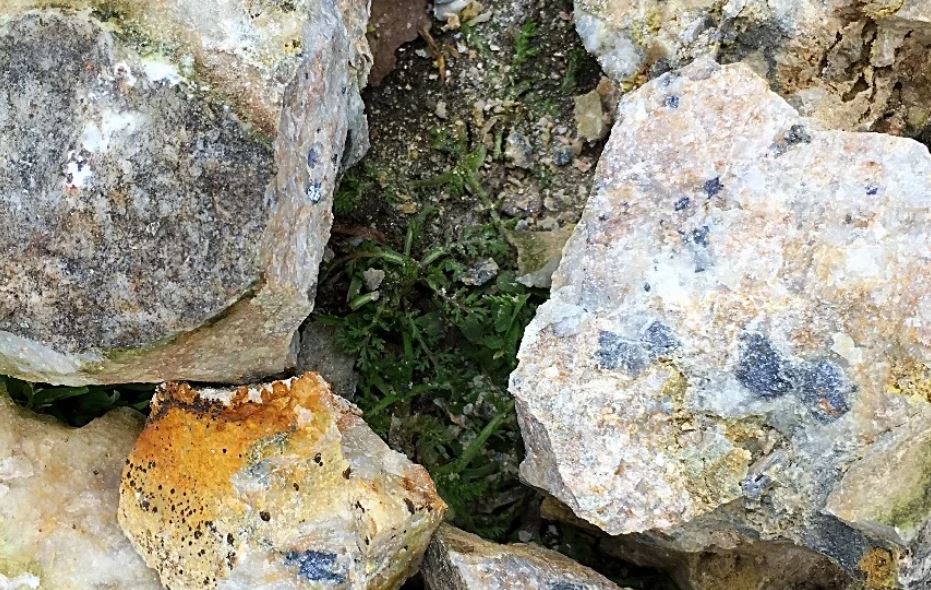Pan Global drills 1.04% copper over 3.9 metres at Escacena, Spain

Pan Global Resources Inc. [PGZ-TSXV; PGNRF-OTC] reported assay results for 14 drill holes from the outer extent of the La Romana copper-tin discovery mineralization at the 100%-owned Escacena Project in the Iberian Pyrite Belt, southern Spain.
“The new results expand the near-surface copper mineralization at La Romana to the south and continues to indicate the mineralization is wide open along strike and downdip,” said Tim Moody, president and CEO. “These results also highlight a new copper horizon in the hanging wall approximately 100 metres stratigraphically above the main La Romana mineralization. In addition, large step-out holes confirmed the prospective geology and mineralization continues to the east. As the drilling targeted the edges of known mineralization, these results were largely as expected. Based on our geologic understanding of the mineralization to date, La Romana has excellent potential to grow further with additional drilling planned for 2023. The company is well positioned for a strong exploration program in 2023 with the latest quarterly financial statements showing a balance of CAD$11.2 million.”
While working on remaining access permissions to the west and east of La Romana, three drill rigs are turning at new targets in the Escacena Project. One rig is currently focused on Romana Deep to the north of the La Romana deposit; the second rig at the Zarcita target approximately 3km north of La Romana; and a third drill rig has begun drilling the first hole on the Canada Honda gravity target to the southwest of Zarcita.
Drill highlights – At La Romana, hole LRD135 returned 3.9 metres at 1.04% copper and 5.2 g/t silver (new copper horizon, from 149.3m). LRD139 returned 10 metres at 0.5% copper, 0.06% tin (Sn) and 2.5 g/t silver, including 2.5 metres at 1.3% copper, 0.17% tin, 6.6 g/t silver.
LRD136 returned 1.9 metres at 1.9% Cu and 6.7 g/t Ag. LRD132 intersected 18 metres at 0.4% Cu, 0.02% Sn and 2.0 g/t Ag, including 0.5 metres at 2.1% Cu, 0.03% Sn and 12.6 g/t Ag; 1.35 metres at 1.3% Cu, 0.05% Sn and 7.2 g/t Ag.
LRD130 returned 22.5 metres at 0.3% Cu, 0.02% Sn and 1.1 g/t Ag, including 0.7 metres at 2.3% Cu, 0.04% Sn and 8.2 g/t Ag; 0.5 metres at 2.3% Cu, 0.19% Sn and 19.3 g/t Ag.
The 14 new drill hole assay results include eight holes testing the southern extent of the La Romana mineralization, three holes testing down-dip to the north and three large step-out drill holes along strike to the east of La Romana. These are the remaining holes from the much larger drill program completed in 2022 that successfully expanded the La Romana copper and tin mineralization and continues to show the mineralization remains open along strike and downdip.
The new assay results for drill holes LRD127, 129, 133, 134, 136, 137, 138 and 139 have confirmed additional near-surface copper, as well as some tin mineralization in the footwall, and expands the La Romana target to the south. The holes intersected copper mineralization from immediately beneath or near the contact with the shallow cover, including supergene chalcocite overprinting primary sulphides. The results show narrow intercepts with high copper grades (>1% Cu) associated with semi-massive to massive sulphides and wider intervals of lower grade mineralization in the footwall to the main La Romana mineralization.
Drill holes LRD130, 132 and 135 continue to show the copper mineralization and associated alteration remain open down-dip to the North and a new high-grade zone identified approximately 100 metres stratigraphically above the main La Romana copper-tin mineralization with 3.9 metres at 1.04% copper and 5.2 g/t silver from 149.3 metres in hole LRD135.
Holes LRD123, 128 and 131 were drilled on 150 metres to 300 metres step-outs to the east of La Romana and confirmed continuation of the prospective host rocks and associated hydrothermal sericite-chlorite alteration. The holes intersected broad intervals of anomalous levels of Pb and Zn plus narrow intervals of higher grade polymetallic massive sulphides indicative of the outer ‘halo’ zone to the copper mineralization and further exploration potential to the east and downdip. Notable polymetallic massive sulphide intercepts include LRD123 that returned 0.25 metres at 0.12% Cu, 1.6% Pb, 2.6% Zn, 9.4 g/t Ag and 0.2 g/t Au. LRD128 returned 0.5 metres at 0.1% Cu, 1.7% Pb, 2.2% Zn and 7.9g/t Ag
LRD131 returned 0.5 metres at 0.15% Cu, 0.4% Pb, 3.3% Zn, 12.8 g/t Ag and 0.5 metres at 0.1% Cu, 1.3% Pb, 1.2% Zn and 4.5 g/t Ag.
The Escacena Project comprises a large, contiguous, 5,760-hectare land package. The Escacena Project hosts the La Romana copper-tin discovery and a number of other prospective targets, including La Jarosa, Hornitos, Zarcita, Romana Deep, Pilar, Bravo and Barbacena.
